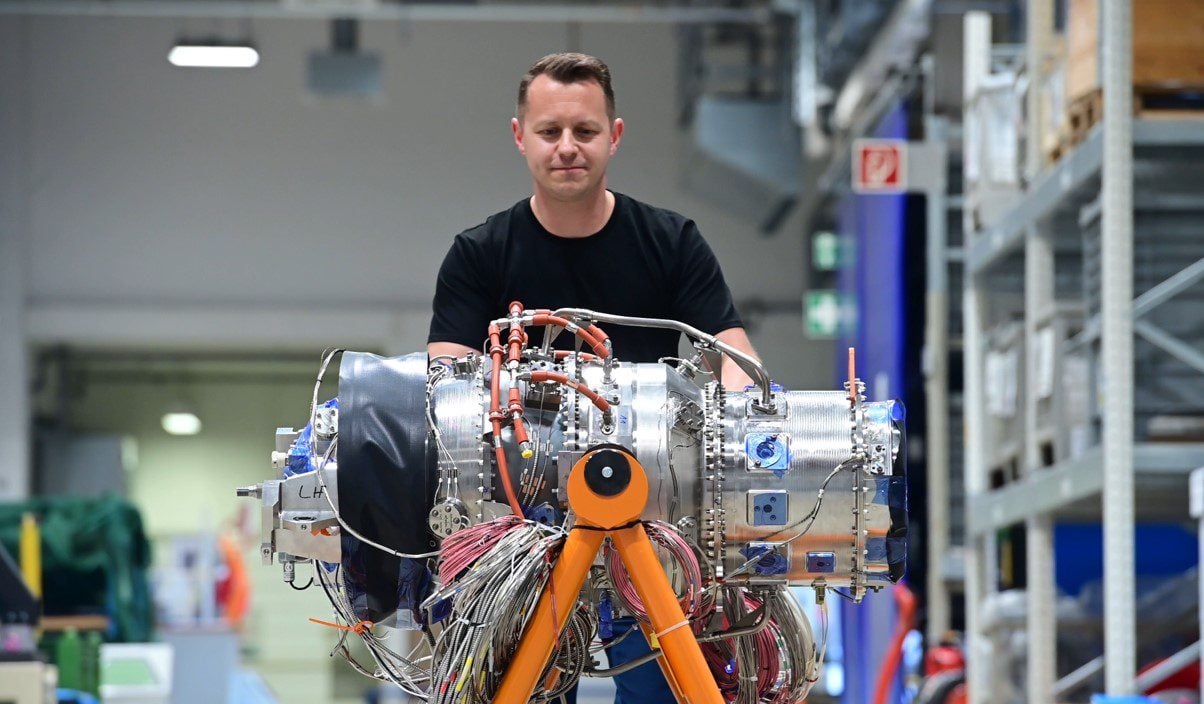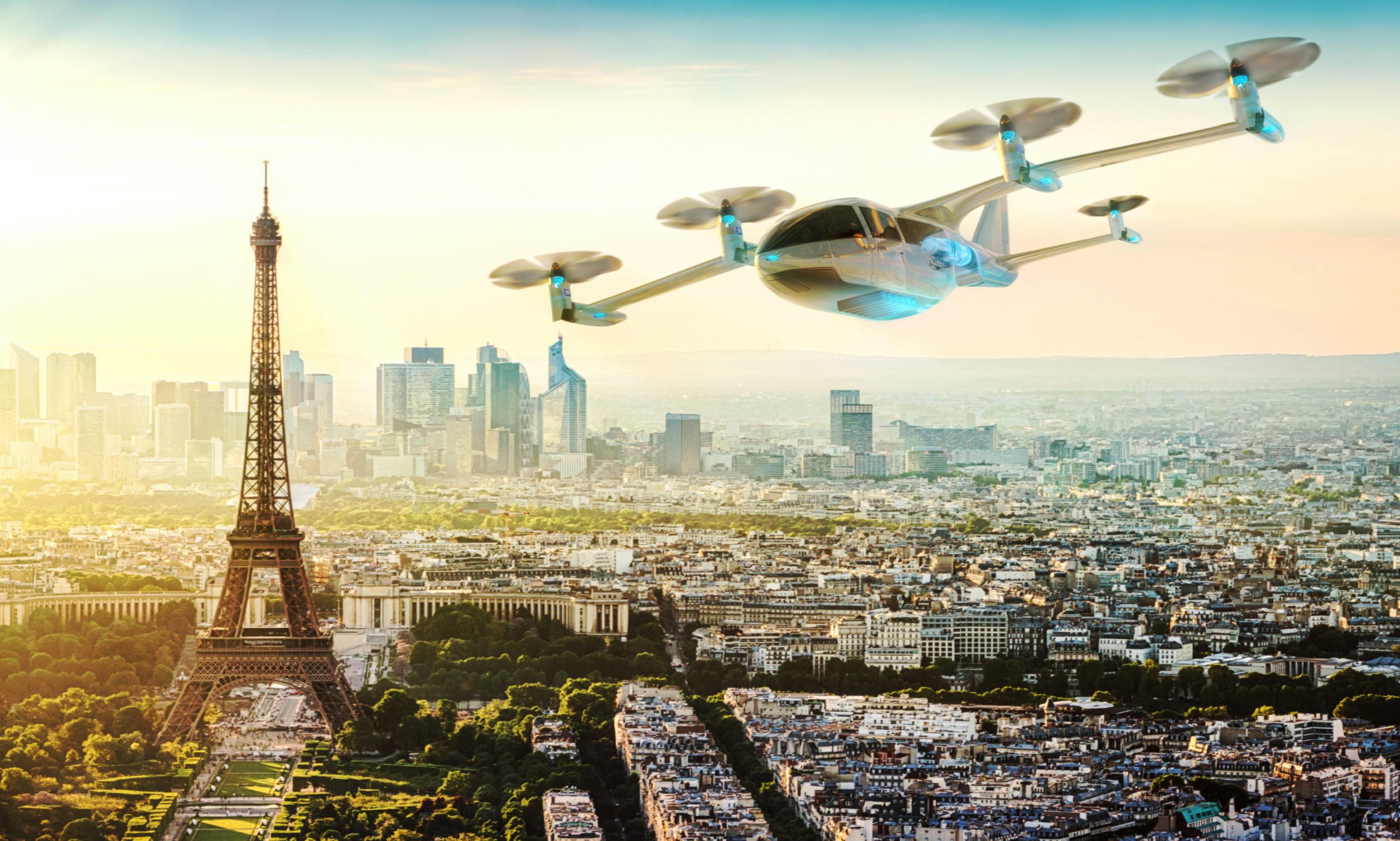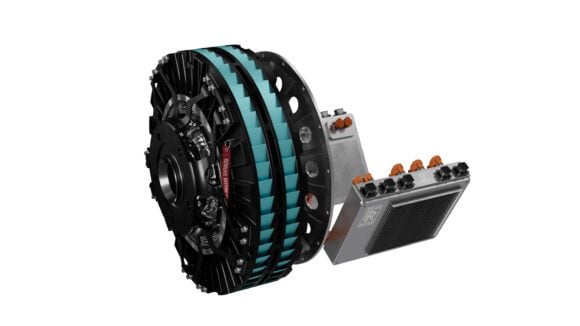
turbogenerator new small engine passing to test 2 embargo until monday june 19th 52957156416 o
A year after unveiling the plan for a turbogenerator engine that is specifically designed for the Advanced Air Mobility market, Rolls-Royce is about ready to start testing the gas-turbine demonstrator. Actually, the first engine is already on the test rig in Dahlewitz near Berlin. Rolls-Royce ready to start testing AAM turbogenerator.
At the ILA Berlin airshow in June 2022, Rolls-Royce said that it would start working on a 500 to 1.200 kW or 1.000 horsepower hybrid-electric turbogenerator that could be used on eVTOL aircraft, small hybrid-electric regional aircraft with up to 19 seats, or even bigger regional aircraft just over 20 seats.
The generator can extend the range or increase the payload of battery-powered aircraft by a few hundred kilometers. Although it hasn’t confirmed that it will use the Rolls-Royce turbogenerator, Heart Aerospace has included two in its ES-30 hybrid-electric 30-seater to double the range to up to 400 kilometers and potentially to even 800 kilometers. Rolls-Royce is in discussions with other start-ups as well, while there is also an interest in the defense market.
“We are looking to become number 1 in advanced air mobility for power and propulsion systems, maintaining the role that Rolls-Royce provides in the market today in widebody jets, business jets, and power systems,” said Matheu Parr, Customer Director of Rolls-Royce Electrical. “In doing that, we will not only develop a new exciting market but also develop capabilities that the group can exploit as part of the transition to more sustainable solutions. Think of more electric engines or the hybridization of solutions.”
Rolls-Royce wants to become number 1 in advanced air mobility for power and propulsion systems. (Rolls-Royce)
Parr says Rolls-Royce thinks it will succeed and win because it is investing in cutting-edge technology with various products. “Against multi-industries moving in or start-ups coming into this industry, Rolls-Royce is very well-positioned to stand what it takes to deliver an aerospace solution into this AAM market. And we are also able to leverage the aftermarket, the total care package and use of data and how we align our products to our customers.”
AAM market
The Advanced Air Mobility market is still emerging, with many analysts doubting if it will be as big and as successful as some believe it will be. Parr mentioned that some 600 initiatives have been identified, with 30 companies that are well-financed that are progressing towards certification. They include start-ups like Joby, Archer, Vertical, Lilium, and VoloCopter, but also aircraft OEMs taking on a prominent role through Embraer, Boeing, Airbus, and Textron.
How eVTOLs will be operated is still subject to much uncertainty. Rolls-Royce thinks that airport shuttles using existing helicopter infrastructure will be the first application, with city taxis not available until 2030. Parr referred to a study of Eve Air Mobility that identified 100 potential airport shuttle routes that could generate $23 billion in revenues through 2035. Regional air mobility or intercity flights will come along not until the early 2030s but this will require mild hybridization.
Power units
For the AAM market, Rolls-Royce has developed three different systems. For Urban Air Mobility eVTOLs, it has a 150 kiloWatt, 1.000+ Nm high-torque electric power unit available It has a so-called “Transverse Flux” architecture that offers direct drive with very high thermal efficiency thanks to air cooling. The unit has high redundancy for any failures in for example the power electronics.
The electric power unit that Rolls-Royce has developed for eVTOLs. (Rolls-Royce)
Rolls-Royce is also developing lithium-ion batteries, although it buys the cells on the marketplace. Matheu Parr admitted that integrating the cells into an aerospace-worthy battery with an energy density that is as high as possible and positioning that into the vehicle is a huge challenge. Vertical Aerospace has been confirmed as using the power units.
New Small Engine
The second power unit is the hybrid-electric turbogenerator or New Small Engine that runs on sustainable aviation fuels (SAF) or later hydrogen to generate electricity for recharging the eight batteries. The unit is very compact and should weigh between 200-250 kilograms. The electrical segment is directly coupled to the two-stage low-pressure turbine on the gas turbine that operates at 32.000 rpm. Rolls-Royce offers an 800 kW version first, but the motor is scalable downwards to 500 kW and upwards to 1.200 kW.
The generator is on the left, and the two-stage gas turbine is on the right in the New Small Engine. (Rolls-Royce)
“Rather than taking an existing helicopter gas turbine or an auxiliary power unit (APU) and convert it into a turbogenerator, Rolls-Royce’s approach is to bring a clean sheet design through that unlocks the benefits we would like to achieve,” Parr said.
Testing the turbogenerator will commence soon, with the gas turbine (main picture) and the electrical segments being tested separately first before they are joined for a whole system test at the beginning of 2024. Two follow-on test phases will come after that. Entry into service is only planned for 2029, so there is quite a bit of time available. By then, the New Small Engine will have its RB number.
Hydrogen
For the bigger regional applications, Rolls-Royce is developing a 320-400 kW high-power, mid-speed electrical power unit that is also air-cooled. Building on the Memorandum of Understanding that was announced in Farnborough last year, the UK engine maker is working with Korean powerhouse Hyundai on the integration of hydrogen fuel cells in an all-electric or hybrid-electric system.
“We are currently in a joint-development program to take their automotive fuel cell and integrate that into an aerospace package here in Germany and take that flying by 2025,” says Parr. This allows Rolls-Royce to identify what is needed for these kinds of systems.
As Simon Burr, Director of Engineering & Technology, outlined in a different presentation, Rolls-Royce continues to work on a hydrogen-powered engine based on the AE2100 turboprop. The initial tests of the engine that runs on liquid hydrogen have gone very well. “There are a lot of things you have to adapt when running an engine on liquid hydrogen. The combustion system runs hotter but it works very well. The great thing is that what you learn on hydrogen can also be applied to today’s engines.”
Views: 139






